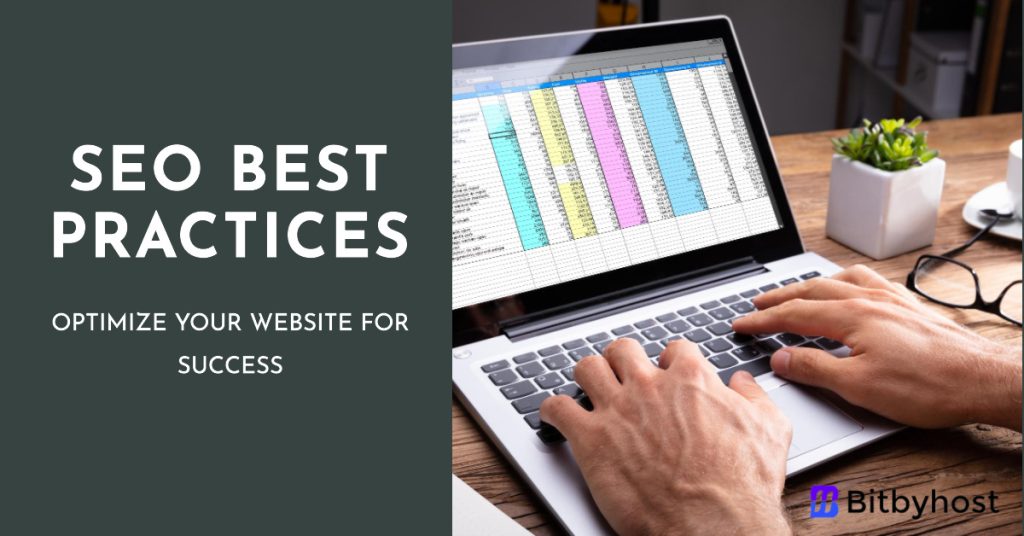SEO best practices for maximum reach tricks will be details, Welcome to the world of search engine optimization (SEO), where labels hold the key to unlocking maximum reach and engagement for your content. In today’s digital age, having a strong online presence is paramount, and SEO is the driving force behind it all. Whether you’re a developer looking to optimize your website or a content creator seeking better visibility, understanding SEO best practices is essential.
Imagine this: You’ve poured hours into creating an amazing piece of content—be it a blog post, video, or infographic—that deserves attention. But without proper labeling, it’s like hiding a masterpiece in plain sight. That’s why knowing how to label your content correctly can make all the difference in attracting organic traffic and boosting your online presence.
In this article, we’ll delve into the world of SEO best practices for developers and content creators alike. We’ll explore what SEO is, its importance in today’s digital landscape, different types of SEO strategies you can employ, as well as tips on how to label your content effectively for maximum reach and engagement.

So buckle up and get ready to elevate your online presence with these invaluable insights into SEO best practices!
What is SEO?
What is SEO? It’s a question that often lingers in the minds of developers and content creators alike. Simply put, SEO stands for search engine optimization. It’s the practice of optimizing your website or content so that it ranks higher in search engine results pages (SERPs). When users type in keywords related to your industry or topic, you want your website to appear at the top.
SEO encompasses a wide range of techniques and strategies aimed at improving visibility and driving organic traffic to your site. From keyword research and on-page optimization to link building and technical optimizations, there are numerous factors that influence how well your website performs in search engine rankings.
In essence, SEO is all about understanding what people are searching for online and delivering valuable content that meets their needs. By aligning with user intent and providing high-quality information or services, you increase the likelihood of ranking higher in SERPs.
But why is SEO important? Well, think about how you find information online. Chances are you turn to search engines like Google or Bing. Studies show that most users rarely venture beyond the first page of search results, making it crucial for businesses and websites vying for attention to secure top positions through effective SEO practices.
By optimizing your content using relevant keywords, creating an intuitive user experience on your website, building authoritative backlinks from reputable sources, and staying up-to-date with algorithm changes—among other strategies—you can enhance both visibility and credibility within your niche.
Understanding SEO Best Practices

Search Engine Optimization (SEO) is the driving force behind online visibility and success. It’s the compass that guides your content toward the right audience, ensuring it’s discovered precisely when needed. By embracing and applying SEO best practices, you open the doors to a world of increased reach and engagement. Let’s dive into the core components that constitute SEO best practices and explore how they can elevate your content’s impact.
The Role of SEO in Online Visibility
At its heart, SEO is all about making your content stand out in the vast digital landscape. When users search for information related to your content, effective SEO ensures your content shines brightly on search engine results pages (SERPs). This enhanced visibility boosts the likelihood of users clicking through to your website, blog, or page, driving organic traffic and potential conversions.
Benefits of Following SEO Best Practices
Embracing SEO best practices offers a cascade of benefits. First and foremost, it catapults your content’s ranking on SERPs. The higher your content appears, the greater the chance of users clicking on it, leading to a surge in organic traffic.
Moreover, implementing SEO best practices enriches the user experience. Well-optimized content becomes user-friendly, easy to navigate, and aligned with search queries. This positive user interaction translates to longer time spent on your site and reduced bounce rates, signaling search engines that your content is valuable and authoritative.
3 ways of seo best practices for maximum reach
1. Rich your content based on target keyword:
As you develop your content SEO strategy, SEO tools like Semrush, and Ahrefs can help you zero in on what your ideal target keywords should be. Your keyword planning tools are set up to help you align your content with what your searchers are looking for. Each piece of content you create should strive to match search intent as closely as possible.
Whichever tool you use should provide suggestions based on:
- Primary keywords. These high-level keywords should serve as the main topic.
- Secondary keywords. Should be used as often as possible as subheadings in your articles and pillar pages.
- Supporting language. Lower-level keywords you can use throughout the text.
2. Optimize all images
You want your pages to load as quickly as possible, so make sure you optimize images so their file sizes are as small as they can be.The easiest way to avoid having to reduce a lot of image sizes later on, is to make it a best practice to develop your images to look as good as possible at the smallest size possible.This is because Google considers the user experience in its search ranking algorithm, and if your page loads slowly but your competitor’s page that contains the same information loads quickly, especially on mobile, Google is going to give the faster page to users first.
3. Include a number of internal links
Link with intention and keep search in mind, especially when choosing anchor text. This means that instead of using phrases such as “Read this article,” you’re using anchor text that utilizes the primary keyword that the article is based on. This tells search engines more information about where the link is headed.
Google doesn’t say how many external or internal links to include, but as a rule of thumb, base this on the length of your content. The most important thing is to make sure all your internal links are relevant.
Nowadays there are different types of SEO depending on specific goals: local SEO focuses on targeting customers within a particular geographic area; mobile SEO caters specifically to mobile device users; voice search optimization optimizes content for voice-activated searches… The list goes on!
While implementing solid SEO practices can yield tremendous benefits by boosting organic traffic, enhancing brand visibility, increasing conversions,and establishing authority within your field,it’s important not overlook any potential drawbacks.
Because here’s where I’ll spark some honesty: SEO is not a magic bullet. It’s a long-term strategy that







